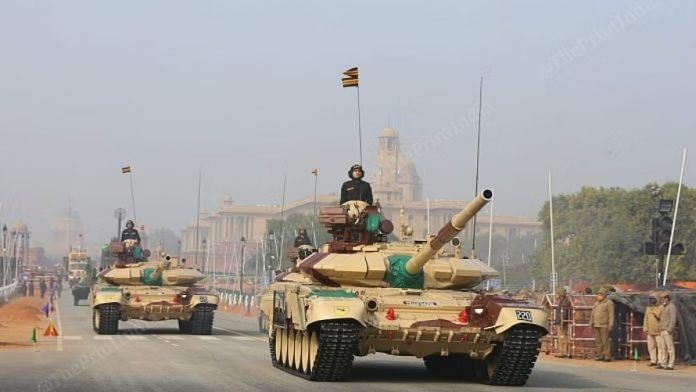On the occasion of India’s 77th Army Day, Chief of Army Staff General Upendra Dwivedi highlighted defence minister Rajnath Singh’s vision for 2025 as the ‘Year of Reforms’. Aligning with this initiative, the Army has identified five key result areas, namely, jointness and integration; force restructuring; modernisation and technology infusion; systems and processes; and human resource management. Also speaking on this occasion, though at a separate event, the defence minister stressed on the need for rapid modernisation to meet all current and future challenges in a changing geopolitical landscape.
The most important of the KRAs is modernisation and technology infusion, as it involves capital expenditure, which is governed by innumerable rules and regulations. Primary among this is the Defence Acquisition Procedure (DAP) 2020. The DAP 2020 is a nearly 700-page long monolith, difficult to read and even more difficult to comprehend. It superseded the DAP 2015, which itself was over 400 pages. Acknowledging that the policy is flawed, Defence Secretary Rajesh Kumar Singh said that the DAP would undergo a complete revamp within the next six months to a year, to address a system that has been criticised for delays and inefficiencies.
Any Army will always have a mix of weapon systems and platforms that range from state-of-the-art to obsolete. An optimum mix is considered to be 30 per cent latest, 40 per cent existing, and the last 30 per cent nearing the end of their useful life. As and when systems keep getting added to the top of this chain, the older systems are discarded from the bottom. This ratio has also to be seen in terms of the life of the equipment and technological advancements.
Reducing acquisition timelines
A major platform like a tank or artillery gun may have a life of 30 to 40 years, but a system in the field of communications or electronic warfare may require a change every 10 years or so. However, if there are little or no fresh infusions, this ratio gets skewed. In India’s case, due to a long drawn out and convoluted acquisition process, this ratio would perhaps be closer to 15: 50: 35.
This prolonged acquisition process has another fallout: By the time a new system is inducted, it is already technologically outdated, even if the equipment itself is brand new. The time between the Defence Acquisition Council granting an Acceptance of Necessity (AoN) for a new platform, and its eventual induction, could be as long as a decade.
The platform could be new, but it definitely would not be state-of-the-art by any stretch of the imagination. The need of the hour, therefore, is to compress the acquisition timelines so that a new system is inducted into service while it is still contemporary.
The AoN is a preliminary approval, and the procurement process involves several stages, including detailed project reports, financial approvals, and competitive bidding, wherein lies the rub. Each of the steps entails approvals and oversight at multiple levels and by different branches within the defence ministry itself. Each branch views each proposal strictly, in accordance with the clauses laid down in the DAP, with no leeway for deviations, making the process inflexible. Consequently, all AoNs do not necessarily get converted to actual contracts signed and supply orders placed.
For example, in December 2022, the Defence Acquisition Council approved AoNs for 24 capital acquisition proposals worth Rs 84,328 crore. While this sounds good on paper, the actual conversion rate from AoN to contracts signed remains to be seen. Just the granting of the AoN should not give a false sense of security or accomplishment. The proof of the pudding lies in the delivery of the system to the end user, be it the Army, Navy or Air Force.
Also read: More forces not ideal to tackle militancy in Jammu. A dynamic counter-terror grid is needed
Product greater than process
There are recent reports that some major contracts will be signed before the close of the current financial year to include the Advanced Towed Artillery Gun System (ATAGS). If this materialises, deliveries will commence 18 months thereafter. The time period between the grant of the AoN and delivery would be almost 10 years, if not more.
This would be similar to the situation with the Rafale aircraft.
The Ministry of Defence had cleared the acquisition of the aircraft as far back as 2012, the AoN for which was granted much earlier. However, the deal got mired in controversy and after many ups and downs, an Inter-Governmental Agreement was signed in 2015 for the procurement of 36 aircraft against the projected requirement of 126 multi-role fighter aircraft. This, in effect, bypassed the DAP. A contract was finally signed in 2016, with the first of the Rafale aircraft flying into Indian skies only in 2020, during the height of the Covid-19 lockdown. From the grant of AoN in 2007 to the delivery in 2020, it took 13 years.
If this is indeed the ‘Year of Reforms’, what needs to be changed first and foremost is the acquisition cycle. Not only does the process have to be made simpler but much greater powers need to be delegated to the Service HQ to undertake procurements at a faster pace without oversight at multiple levels – as was the case when emergency procurement powers were delegated to the Services. Even after scrupulously following all formalities, contracts were signed and deliveries ensured within 24 months.
The product must take priority over the process.
General Manoj Mukund Naravane PVSM AVSM SM VSM is a retired Indian Army General who served as the 28th Chief of the Army Staff. Views are personal.
(Edited by Zoya Bhatti)






